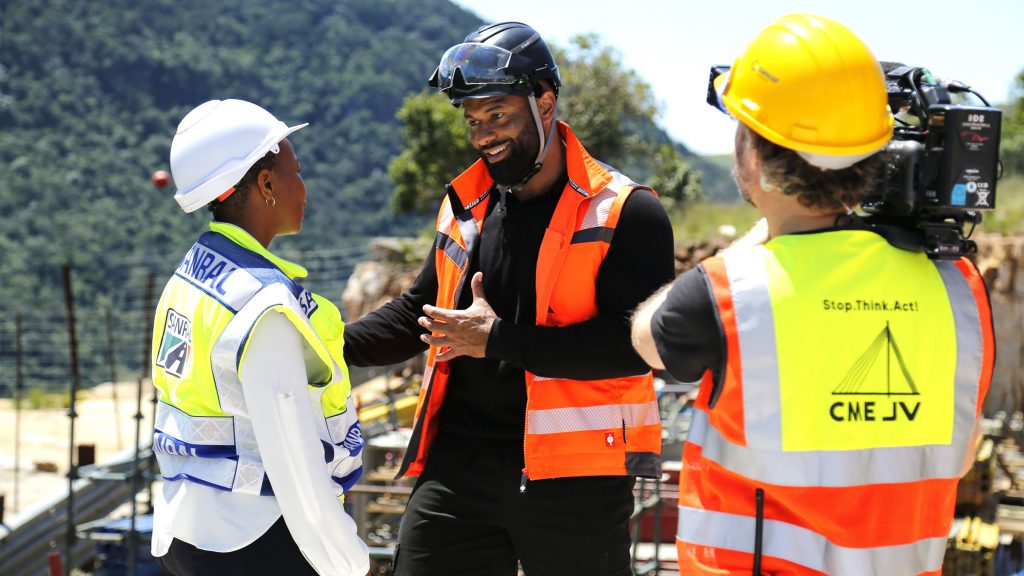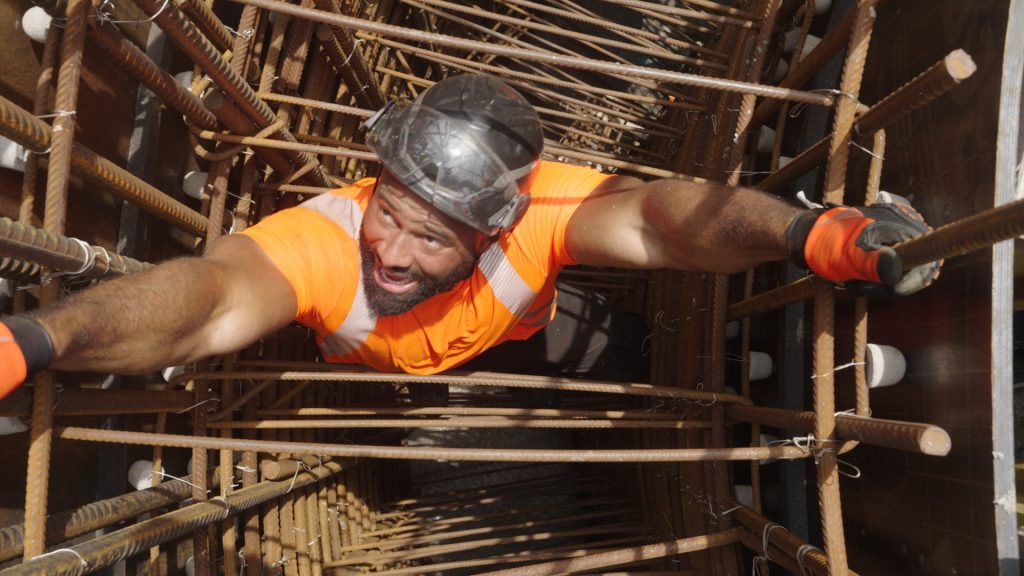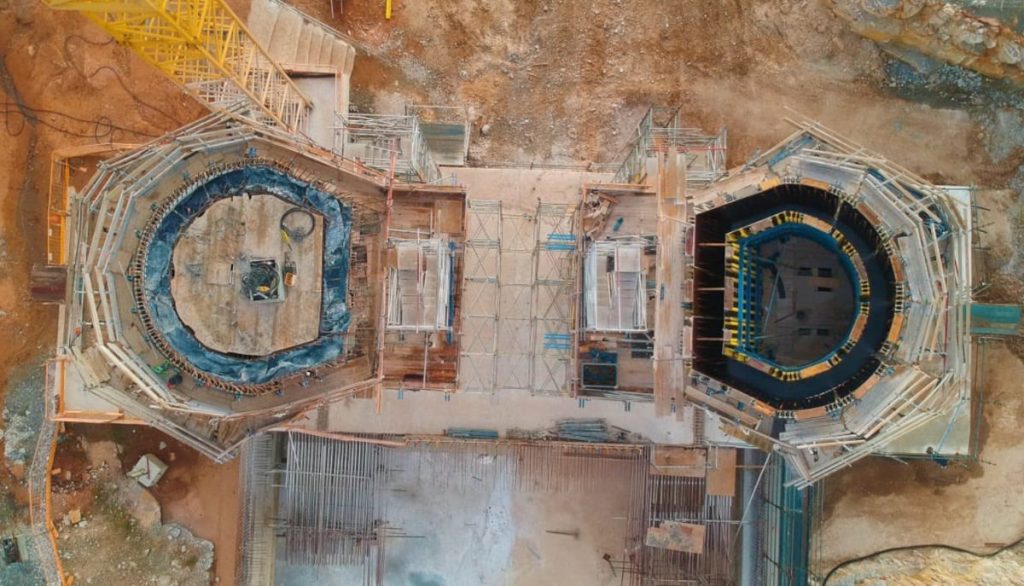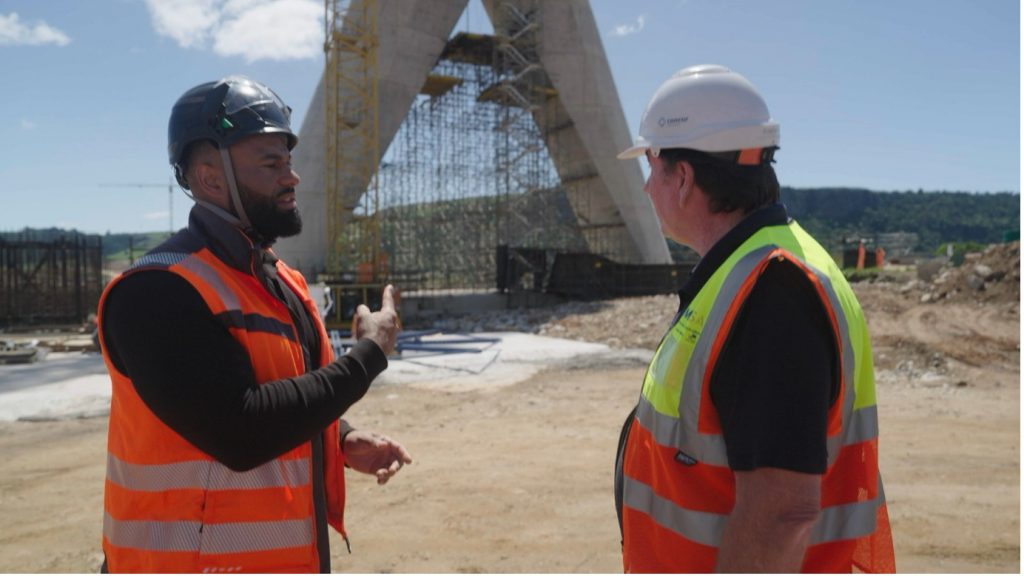SANRAL’s Msikaba Mega Bridge, taking shape on the N2 Wild Coast Road in the Eastern Cape, was recently featured on National Geographics’s Building Impossible with Daniel Ashville television programme. This bridge across the Msikaba Gorge is one of the longest cable-stayed bridges in Africa, and is an engineering marvel.
Episode 2 of season 1, titled ‘Africa’s Mega Bridge’, featured the show’s host, British construction maestro Daniel Ashville, helping to build this bridge, which is one of SANRAL’s flagship projects.
Ashville described the “masterful concrete solutions” used on this project, and stated how once completed the Msikaba Bridge will cut the transport time between East London and Durban by up to 3 hours.
So how did South Africa end up as one of the destinations on the show? Ashville said that the show’s team had several projects under consideration, but their main criterion was to be on site when critical construction milestones occurred.
Photo: National Geographic for Disney.
Daniel Ashville climbing into the steel works that reinforce each concrete pour on the Msikaba Bridge.
“The more I learnt about South Africa, the more I liked it – the location, the backstory,” he said. “Building Impossible is not just about structures; it’s about the people who build them, the cultural intricacies and the transformative impact of these constructions.”
Building Impossible often delves into complex engineering concepts, but Ashville makes it accessible to all by finding similarities between monumental projects and smaller-scale endeavours that people can relate to.
The Msikaba Bridge has pylons and anchoring blocks on each side of the Msikaba Gorge and will be built from each side until it meets in the middle Here are some of the staggering numbers mentioned in the show:
- There are four anchor blocks, two on each side of the gorge, each weighing 21 000 tonnes.
- The bridge deck will be made up of 38 deck segments.
- The deck will include four traffic lanes and one pedestrian footpath, and will weigh 12 000 tonnes – the same as the Eiffel Tower.
- Each pylon stands 40 storeys high and the concrete is poured in 5 metre increments.
- The pylon legs are hollow, which is cost-effective and makes them stronger.
- The concrete team operates 24/7.
- In all, around 43,000 cubic metres of concrete will be used – the equivalent of 6000 truckloads or 20 Olympic-sized swimming pools filled with concrete.
During the episode Ashville gave viewers a look inside a concrete pour on the North Tower, making his way over to the opposite side of the gorge using a custom-made cable car.
At the North Tower the concrete was pumped up to make up part of the pylon legs. At the South Tower, 11 such concrete pours had already taken place, and the height was up to where the pylon legs meet, from which a single spire will rise.
Ashville physically got inside the steel reinforcement that was about to receive another 5 metres of concrete, to join other workers at the ready to use special ‘pokers’ to ensure that any air in the concrete is dispelled.
Then he took a drive on the truck bringing the 45-tonne box girder to the site. This box girder will hold the first deck segment in place. Carrying that kind of weight can be perilous when going up and down steep hills and around sharp turns – features that characterise the road to the site.
Once it reached the South Tower, truck driver Howard Ntuli had to reverse the massive load close to the edge of the cliff. Then the box girder had to be hand-winched into place, along two rails, by two teams of workers, which took over 3 hours.
This project is being built 200km away from the nearest town, which makes getting anything to the site a challenge. And before any construction could start, access roads first had to be built to get to the site.
Daniel Ashville discusses the Msikaba Build project with crew site boss Lawrence Savage.
Photo: National Geographic for Disney.
Filming in South Africa spanned two days of travel, five days of filming and another two days to return. Ashville observed some striking cultural differences during his journey, and South Africa left a particularly profound impression. He noted that “people don’t clock watch” in South Africa, highlighting the dedication and emotional connection workers have to their jobs.
He added: It was a very emotional time building in South Africa, and the people were very connected with what they were doing, and were very proud of what they were building. They were proud that they were building something that would make a difference where they were.”
Find Building Impossible it on National Geographic, channel 181 on DStv, Tuesdays at 19h00.





